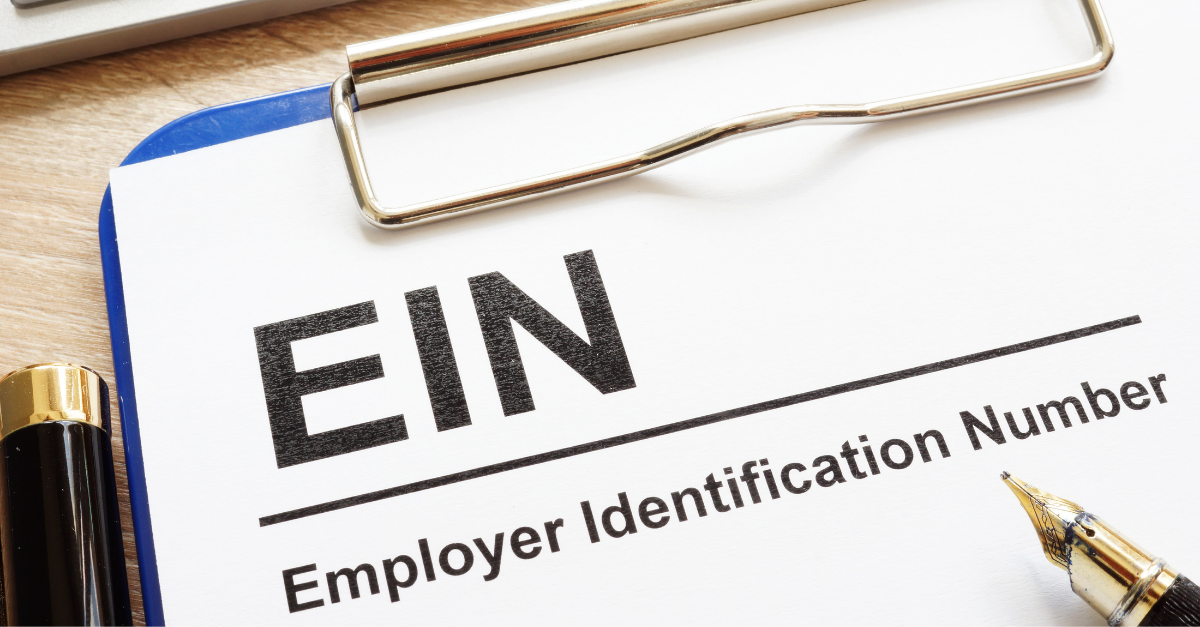The "gig economy" has fundamentally altered the shape of American commerce. As a result, over 58 million Americans now identify as independent workers. While many businesses enjoy using independent contractors, it is critical that they learn to distinguish between W-2 employees and 1099 workers for tax purposes.
Failure to correctly classify W-2 employees and 1099 workers can lead to legal or financial penalties. The differences between the two worker classifications are nuanced, which can make classifying staff members a challenge.
This guide explores W-2 employees, 1099 workers, how 1099s and W-2s impact payroll taxes, and other related topics. Read on to learn more about how your business should classify its workers!
What is a W-2 Employee?
The traditional definition of a W-2 employee is an individual formally employed by a company or organization in the United States. W-2 employees receive annual tax documents containing pertinent details about their earnings and deductions. Unlike 10-99 workers, W-2 employees are bound by a formal contract with their employer. This condition means these employees can benefit from various protections and occupational advantages. In addition to benefits, W-2 employees either receive a standard salary or an agreed-upon hourly wage.
Employers also set aside payroll taxes for W-2 employees. This reduces the tax burden for many W-2 employees by ensuring that they don't have to cover things like Medicare and Social Security taxes alone. However, it does create an administrative burden for employers, who must then deduct taxes on behalf of their employees.
W-2 benefits employers and employees. For employees, using a W-2 affords many businesses greater control over their workforce. Employers can carefully outline details related to hours, workplace procedures, and more. W-2 employees will typically be given an employee handbook that outlines the exact nature of their position and how to perform their assigned duties.
Remember: A W-2 is a tax form designated for domestic companies that employ individuals licensed to work in the United States.
What is a 1099 Worker?
A 1099 worker is another term often used to identify an independent contractor or freelancer. Unlike W-2 employees, 1099 workers do not receive employment benefits like sick pay or health insurance and, as such, do not have the same occupational responsibilities. What does this translate to? Essentially, it means that a 1099 worker cannot be held to specific standards regarding the terms of their employment.
At the end of each tax year, a 1099 worker receives a form detailing the full scope of their compensation. These workers also receive a 1099 form from each client for whom they freelance. While employers automatically take income taxes out of a W-2 employee's payroll, this is decidedly not the case with 1099 contractors.
Since employers do not contribute payroll taxes for workers on 1099 contracts, the worker must pay a 15.3% self-employment tax, which is then put towards Medicare and Social Security. As such, 1099 contractors miss out on advantages that W-2 employees enjoy, such as options for retirement and insurance plans.
What is the Difference Between a 1099 vs W-2 Employee?
Below are five critical differences between W-2 vs. 1099 employees:
- Employment status: Workers who sign a W-2 form are officially considered company employees. Workers signing a 1099 form are technically considered freelancers or independent contractors.
- Tax Forms: "1099" and "W-2" refer to specific tax forms. Which form you file will depend on the classification under which your work falls.
- Responsibilities: Since 1099 workers are technically classified as independent contractors, their employers cannot dictate the conditions under which they perform their duties. W-2 workers, on the other hand, are employees in the conventional sense of the term, meaning their bosses can demand that they work certain hours, etc.
- Tax Withholding: Regarding W-2 employees, businesses must automatically deduct and withhold income taxes as part of their respective accounting processes. 1099 contractors, meanwhile, are responsible for paying their taxes, which may require additional savings on their end. To estimate the difference between W-2 and 1099 taxes, use a 1099 vs. W-2 calculator.
- Benefits: Businesses must offer W-2 employees a range of benefits, including health insurance and retirement plans. 1099 contractors, though they have more flexibility, receive no such benefits from their employers.
Pros and Cons of 1099 for Employers and Employees
With any work-related contract, there are benefits and drawbacks for employers and employees alike. While independent contracts may provide a greater degree of latitude than the more rigidly defined W-2 roles, there are drawbacks to 1099 work as well. Let's explore the pros and cons below:
Pros for Employers
Cons for Employers
|
Pros for Employees
Cons for Employees
|
Pros and Cons of W-2 for Employers and Employees
Now that you understand the pros and cons of 1099 contracts let us unpack the advantages and disadvantages of W-2 contracts as they apply to both employers and employees:
Pros for Employers
Cons for Employers
|
Pros for Employees
Cons for Employees
|
1099 vs W-2 Employee Examples
The differences between 1099 workers and W-2 employees can be difficult to distinguish. Let's unpack some relevant examples for further clarity:
1099 Worker Examples
Below are two popular examples of 1099 workers:
- Freelance Writer: A freelance writer works on a per-project basis and is not attached to any formal employment agreement. For instance, if a publication accepts a pitch from a writer, they can hire said writer to research and write the story they pitched. Since the writer in question is a 1099 contractor, they will only be paid for this specific piece and not for any additional or ongoing work.
- Rideshare Driver: In most cases, a rideshare driver is a 1099 contractor, although some jurisdictions have made it mandatory for rideshare platforms to reclassify workers as employees. Since rideshare apps allow drivers to log in and work whenever their schedule permits, they are not technically classified as full-time employees.
W-2 Employee Examples
Let's explore two examples of W-2 employees:
- Full-Time Administrative Assistant: A full-time administrative assistant is a W-2 employee who is required to be in-office at specific, generally agreed-upon times (perhaps the most frequently cited example would be 9 AM to 5 PM, colloquially referred to as "9 to 5"). Employers dictate start times and other professional mandates.
- Schoolteacher: A schoolteacher is a W-2 employee who provides teaching services for specific hours on specific days throughout the calendar year. Schools dictate curriculum and other pertinent educational requirements, meaning teachers must adhere to the school calendar to ensure that their students are adequately prepared.
Payroll Taxes for W-2 vs 1099 Workers
Payroll taxes are one of the most important distinctions between W-2 employees and 1099 workers. W-2 employers must allocate deducted taxes towards Medicare and Social Security. 1099 contractors, on the other hand, are encouraged to save money throughout the year and apply it to their overall income tax balance.
1099 vs W-2 Form
Filing 1099 and W-2 forms with the Internal Revenue Service is a non-negotiable requirement. Failure to do so will result in financial repercussions. You can access the 1099 form here and the W-2 form here.
How to File 1099 vs W-2 Tax Forms
Below, we will explore the ins and outs of filing tax forms for both 1099 and W-2:
How to file 1099 forms
Suppose your business employs more than 250-plus 1099 contractors. In that case, it must file 1099 forms with the IRS via electronic filing (to be clear, businesses can also file electronically if they employ less than 250 1099 contractors). Employers must send a copy of the 1099 form to all contractors. Please reference the IRS website for the most up-to-date instructions on this process.
How to file W-2 forms
As with 1099s, businesses that employ more than 250 W-2 employees must file forms with the SSA electronically. Again, businesses that employ less than 250 individuals through W-2 can also exercise this option. These businesses must also file a W-3 form. Employers can provide employees with electronic copies of their W-2 with the employee's permission. All W-2 employees must receive a copy of their original work form.
What are the Legal Risks of Misclassifying 1099 vs W-2 Employees?
Failure to correctly classify your workers can lead to severe ramifications. This is the sort of thing that the IRS takes very seriously. If it is decided that you have intentionally misclassified workers, you could be subject to various financial repercussions, including 20% of wages paid, plus all FICA taxes.
The IRS reserves the right to seek criminal penalties of up to $1,000 for every misclassified worker within your business. If you believe you have accidentally misclassified a worker and wish to correct the issue, consider using the Voluntary Classification Settlement Program — it offers some relief from misclassification penalties.
W-2 vs 1099 Employees: Which Should you Hire for your Business?
Now that you're clear on what distinguishes a 1099 contractor from a W-2 employee, the time has come to decide which option best fits your professional needs.
If you're a new business, you may need more money or capacity to accommodate a full-time staff. If that's the case, 1099 contractors are a solid option. Maybe you're looking to get a short-term project off the ground. Again, contractors are an excellent fit for this sort of assignment. Many organizations use a calculated combination of full-time employees and contractors; there's no need to settle on using just one type of worker so long as said workers are classified accurately.
In deciding which type of worker to employ, businesses must partner with a payment processor capable of integrating with existing payroll services. By relying on a trustworthy and reliable merchant service provider equipped with third-party integration options, employers can organize payroll and staff management software under a single umbrella. This means your staff can access a multitude of features in a single location, including tracking for revenue and hours, payments to staff bank accounts, and much more.
FAQs for 1099 vs. W-2
You can absolutely hire a 1099 contractor for a position with your business, provided they are the right fit for the job. However, once they officially become a full-time employee of your company, you will need to begin deducting taxes and tracking earnings per their W-2 tax form. Inversely, if a full-time employee wishes to transition to inhabiting a 1099 contractor role, they can do just that, provided their new role is compliant with 1099 contractor rules. Whatever the case, be sure you are classifying workers correctly, as failure to do so may incur dire financial consequences.
The answer to this question largely depends on whether the worker is being reclassified for a W-2 or 1099 position. If you are reclassifying a 1099 to a W-2 role, the worker must fill out a W-4 form. Following this, taxes will be withheld, and benefits will be provided via state regulations. Employers can treat former W-2s as 1099 contractors, but only if they meet the criteria for 1099 status.
While there is an advantage in terms of flexibility when it comes to working as a 1099 contractor, the truth is that this line of work has its downsides. For starters, 1099 contractors enjoy a different kind of job security than a W-2 employee: they are guaranteed neither eventual full-time employment nor benefits nor consistent wages. This leaves 1099 contractors vulnerable to reductions in short-term work, financial instability, and even, in some cases, termination. 1099 contractors need access to pensions and health insurance based on their employment. They are also responsible for invoicing their employers and paying the total of their tax balance, which is not a task for which they receive compensation.
By definition, a 1099 contractor cannot be a full-time employee. While a 1099 contractor may end up working the same hours as a full-time employee, the employer in this equation does not have the right to dictate how and when a 1099 contractor performs their job. Suppose an employer wishes to transition a 1099 contractor into a full-time employee. In that case, they must do so in a manner that allows the contractor in question to then work under W-2 classification.
From a tax perspective, nothing is stopping a W-2 employee from entering into a 1099 contract with a separate company (i.e., doing freelance work on the side). However, specific contracts may explicitly prevent employees from working other jobs. To avoid this confusion, review your contract to ensure you don't run afoul of your W-2 employer. To that end, a company can issue a W-2 and 1099 to the same employee, but only if the work carried out under the 1099 status falls under the category of contractual work. An example is a business hiring its own employees to carry out separate tasks as freelancers.
Apart from standard minimum wage, no minimum income is required for W-2 employees. That said, anyone who makes money on a W-2 form must declare the entirety of that income for tax purposes.
Individual circumstances impact whether you make more money as a 1099 or W-2 employee. Indeed, 1099 contractors feel the burden of their employment conditions come tax season. On the other hand, W-2 employees only pay a portion of their tax to cover Social Security and Medicare, whereas their employer takes care of a portion of the rest. 1099 contractors can also deduct certain professional expenses from their taxes, meaning there may be cases where their tax burden is lower than someone working as a W-2 employee. To estimate the difference between 1099 and W-2 taxes, use a W2 vs. 1099 calculator.
Even if your W-2 earnings are under $600, you are still responsible for declaring it to the IRS.






